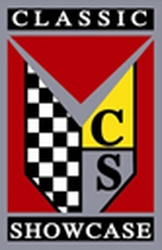SPRING 2024 NEWSLETTER
Question 1 from Joe C. in Los Angeles, CA: Hello Classic Showcase! I'm just getting into these cars, and I've been reading up on
the Series 1 Jaguar E-Type. I noticed the distinct bulge on the hood,
can you tell me what that's all about?
Tom's Answer: Hi Joe. The distinctive bonnet (hood) bulge that you speak of on the Series 1 Jaguar E-Type was initially designed to accommodate triple carburetors for racing
versions of the car, and has became one of many recognizable features of the
E-Type's design. Note: this bulge is not present on later Series 2 and 3
models! The picture here is from a 1965 XKE that we are currently restoring.
Question 2 from Peter J. in San Diego, CA: I've been learning about classic Porsches, and I stumbled upon
something intriguing about the early 911s. Apparently the 1st generation Porsche 911 originally had a different name before it
was officially called the 911; can you shed some light on what it was originally named and why the change was made?
Tom's Answer: Hi Peter, the first-generation 911 model was originally known as the Porsche "901". However, shortly before its public debut at the 1963 Frankfurt Motor Show, Peugeot asserted their trademark rights to car model numbers with a '0' in the middle, claiming that any three-digit model designation with a '0' in the middle belonged to them. In response, Porsche decided to change the name from "901" to "911". This change required relatively minimal alterations to the badges and marketing materials, but it effectively resolved the trademark issue. Thus, the iconic Porsche 911 was born, and it has since become one of the most recognizable and revered sports cars in automotive history!
Q3: James W. in Santa Barbara, CA: I've been interested in classic Jaguar E-Types, especially those that have undergone performance-minded restorations. Can you tell me about some of the popular upgrades or modifications that enthusiasts often make to enhance the performance of these iconic cars? I'm curious to learn more about how these upgrades can transform the driving experience.
Tom's Answer: Hello James. Performance-minded restorations of E-Types often involve upgrades like engine modifications for increased power, suspension enhancements for better handling, high-performance exhaust systems for improved engine efficiency and sound, chassis reinforcements for structural integrity, aerodynamic components for enhanced stability, and interior upgrades for comfort and modern amenities. These upgrades can significantly enhance the driving experience, making the E-Type both more capable and enjoyable while retaining its classic charm.
Question 4 from Joanne C. in Phoenix, AZ: I've been admiring classic cars from the late 1960s, particulalry Mercedes-Benz models. I like the style of the 280 SL and was wondering if you could shed some light on the what sets it apart from Mercedes models from the late 1960s?
Tom's Answer: Hi Joanne. The Mercedes 280 SL 'Pagoda' stood out from other models of its time due
to its unique design features, particularly the removable hardtop known
as the 'Pagoda' roof, which provided improved headroom and added
elegance to its appearance. Additionally, it boasted advanced safety
features, including a rigid passenger safety cell and crumple zones,
ensuring a secure driving experience. Engineered to the highest
standards, it offered a smooth ride with precise steering and powerful
brakes. Inside, the 280 SL featured a luxurious interior with
high-quality materials and upscale amenities, reflecting Mercedes-Benz's
commitment to luxury and sophistication.
